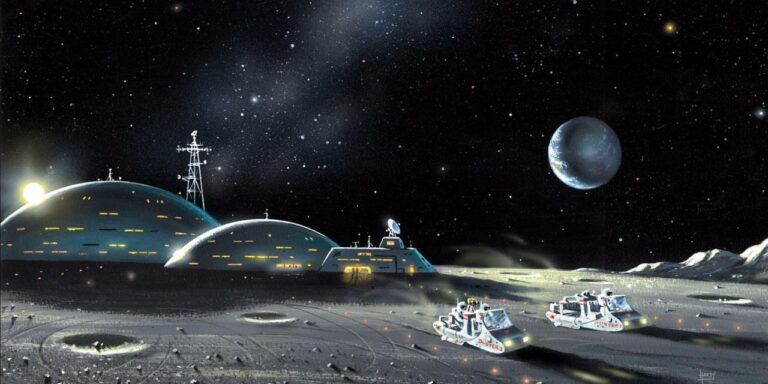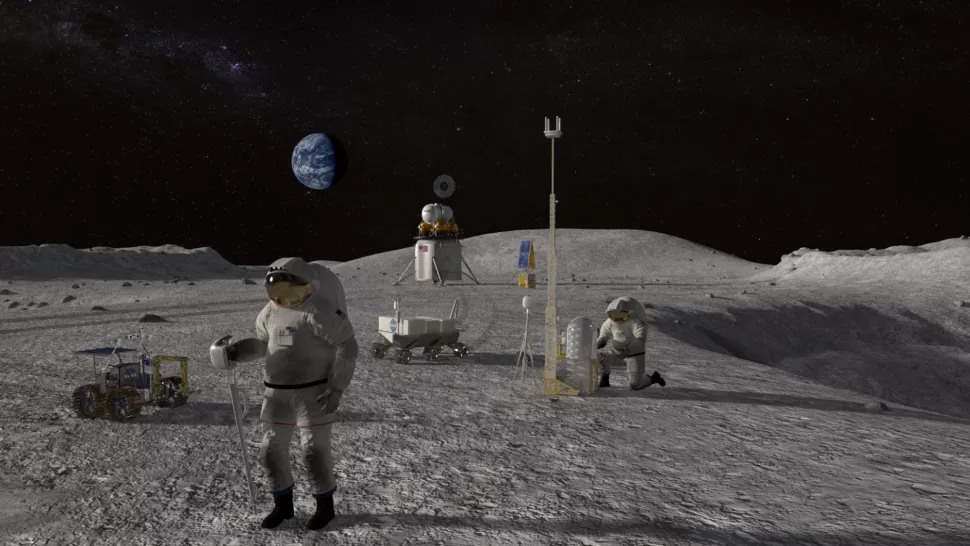
Future of Lunar Colonization

Establishing a colony on the moon would force scientists and engineers to solve extremely complex design problems but would open doors to further exploration into our galaxy and beyond. In order to establish a lunar colony, scientists and engineers would need to develop new lunar structures as well as determine a way for the lunar settlers to have enough vital resources to survive. In spite of the challenges at hand, we could feasibly see a colony on the moon in our lifetimes.
Living on the moon has been a part of science fiction for years, but isn’t something most people think they will see in their lifetime. Establishing a settlement on the moon would force us to confront radically different design challenges than those we typically face here on Earth. But a colony on the moon would offer access to resources and energy production that we are unable to harness on Earth and could be a stepping stone to further exploration of our galaxy and beyond.The lunar soil (or regolith) contains an abundance of natural resources including iron, aluminum, silicon, titanium, oxygen, and small amounts of carbon, helium 3, and nitrogen. This mineral supply is large enough for a lunar settlement to eventually become self-sufficient after extraction and mining techniques are sufficiently refined. These minerals could also potentially be exported back to the Earth for use.
The excitement about energy prospects on the moon has many corporations looking into the possibility of traveling back to the moon. At the poles of the moon, there is nearly constant sunlight that would allow for continuous generation of solar energy, which could be used on the moon or possibly converted to microwaves and sent back to Earth. The lunar soil also has a relatively high abundance of Helium 3, which is thought to be the key ingredient for energy generation through fusion [2]. While still theoretical, fusion is seen as a safer and more sustainable method for generating nuclear power, and Helium 3 is believed to be an environmentally friendly candidate for powering these fusion reactors [11]. The possibilities for energy generation from resources found on the moon are some of the biggest reasons that a lunar colony is being explored.
In order to further explore nearby planets, the depths of our galaxy, and potentially beyond, the moon is the logical first stop and could be a test site for new technologies as well as the launching point for deep space missions. The reduced gravity on the moon allows vehicles to escape its atmosphere and gravitational pull using less energy, making deep space travel easier and more cost-effective. Additionally, a telescope or observatory on the far side of the moon would allow researchers to look deeper into the galaxy than ever before. These telescopes would produce images—similar to the ones produced by the Hubble Space Telescope—that are much clearer than pictures taken from Earth because the moon does not have an atmosphere like Earth’s to scatter light [1].
Establishing a colony on the moon would require different stages of development before a permanent settlement could be established. The first astronauts to travel back to the moon since the Apollo missions of the 1960s and 1970s would bring along the supplies and materials necessary to establish a presence on the moon. Initially, astronauts would live and work out of the moon lander used to travel to the moon, as in Fig. 1. These astronauts would begin building more permanent lunar structures that rely on resources brought from Earth for survival [3]. Ultimately, the goal would be to develop the capability to construct and maintain structures solely from resources collected or produced on the moon. In all stages of this process, engineers must develop unique strategies that can stand up to challenges of transportation, resource management, and infrastructural development.



